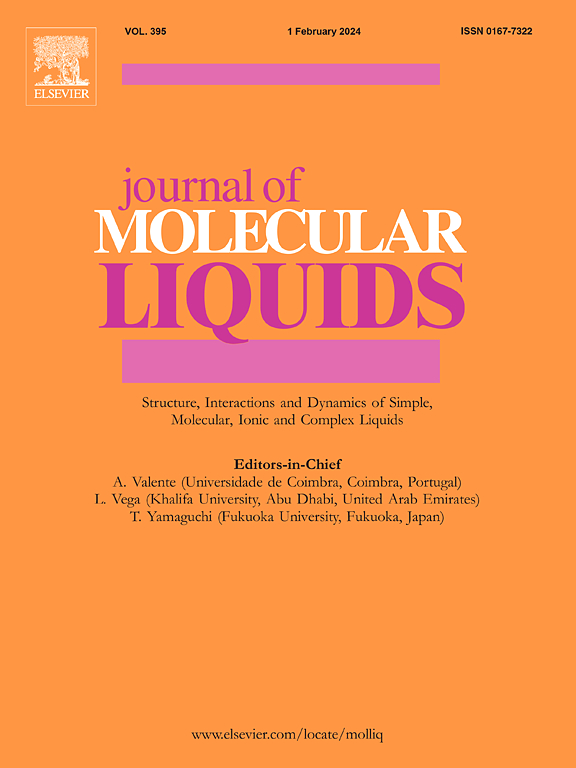对“二维液体中核偶极有序态”的评论,分子液体学报421 (2025)126854
IF 5.3
2区 化学
Q2 CHEMISTRY, PHYSICAL
引用次数: 0
摘要
本文对Aptekarev等人最近发表的论文《二维液体中的核偶极有序态》进行了评论,《分子液体学报》421(2025)126854。在这项工作中,作者使用了我们在蛭石单晶上的实验核磁共振(NMR)数据,并应用了一种不适合这种系统的理论方法,并导致了错误的结论。我们展示了为什么他们的方法不适用于蛭石单晶,澄清了这种晶体的真实结构,并阐明了水分子在蛭石和其他低维晶体中的行为。本文章由计算机程序翻译,如有差异,请以英文原文为准。
Comment on “Nuclear dipolar ordering state in a two-dimensional liquid”, Journal of Molecular Liquids 421 (2025) 126854
This Comment addresses the recent publication by Aptekarev et al., “Nuclear dipolar ordering state in a two-dimensional liquid”, Journal of Molecular Liquids 421 (2025) 126854. In that work, the authors used our experimental nuclear magnetic resonance (NMR) data on a single crystal of vermiculite and applied a theoretical approach that is unsuitable for such systems and leads to erroneous conclusions. We show why their method does not apply to vermiculite single crystals, clarify the true structure of this crystal, and elucidate the behavior of water molecules in vermiculite and other low-dimensional crystals.
求助全文
通过发布文献求助,成功后即可免费获取论文全文。
去求助
来源期刊

Journal of Molecular Liquids
化学-物理:原子、分子和化学物理
CiteScore
10.30
自引率
16.70%
发文量
2597
审稿时长
78 days
期刊介绍:
The journal includes papers in the following areas:
– Simple organic liquids and mixtures
– Ionic liquids
– Surfactant solutions (including micelles and vesicles) and liquid interfaces
– Colloidal solutions and nanoparticles
– Thermotropic and lyotropic liquid crystals
– Ferrofluids
– Water, aqueous solutions and other hydrogen-bonded liquids
– Lubricants, polymer solutions and melts
– Molten metals and salts
– Phase transitions and critical phenomena in liquids and confined fluids
– Self assembly in complex liquids.– Biomolecules in solution
The emphasis is on the molecular (or microscopic) understanding of particular liquids or liquid systems, especially concerning structure, dynamics and intermolecular forces. The experimental techniques used may include:
– Conventional spectroscopy (mid-IR and far-IR, Raman, NMR, etc.)
– Non-linear optics and time resolved spectroscopy (psec, fsec, asec, ISRS, etc.)
– Light scattering (Rayleigh, Brillouin, PCS, etc.)
– Dielectric relaxation
– X-ray and neutron scattering and diffraction.
Experimental studies, computer simulations (MD or MC) and analytical theory will be considered for publication; papers just reporting experimental results that do not contribute to the understanding of the fundamentals of molecular and ionic liquids will not be accepted. Only papers of a non-routine nature and advancing the field will be considered for publication.
 求助内容:
求助内容: 应助结果提醒方式:
应助结果提醒方式:


